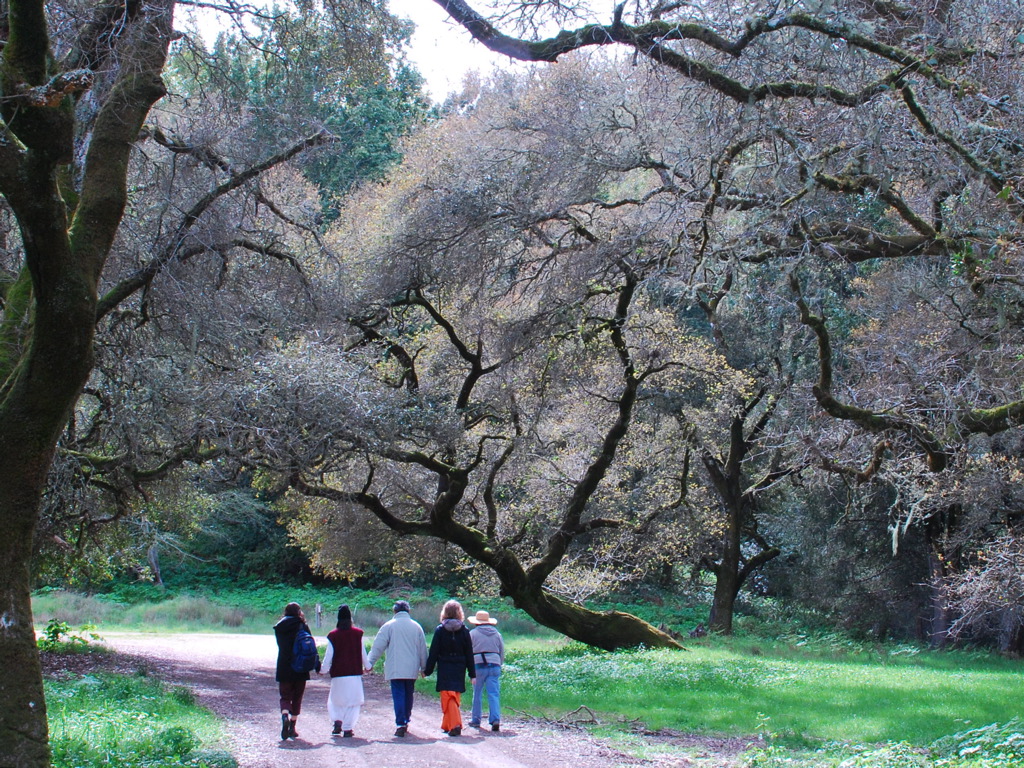By Miriam Goldberg
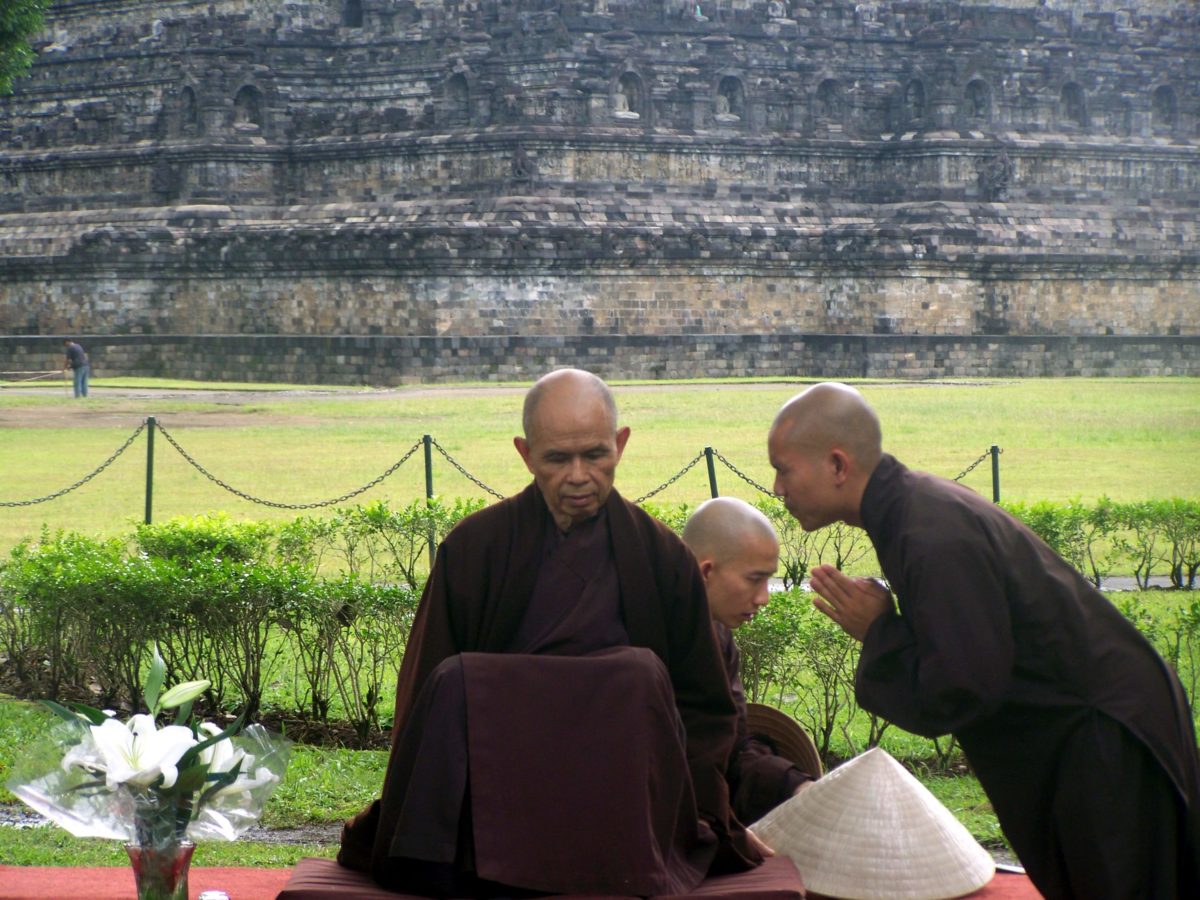
For me, the Indonesian retreat closed with the sunrise meditation walk, Dharma talk, and formal lunch at Borobudur the day after the retreat officially ended.
We walked stone pathways lined with images depicting the Buddha’s life and all the sutras. Every curve of tree, leaf, person, and smile which hadn’t been damaged revealed the uniqueness of each carving,
By Miriam Goldberg

For me, the Indonesian retreat closed with the sunrise meditation walk, Dharma talk, and formal lunch at Borobudur the day after the retreat officially ended.
We walked stone pathways lined with images depicting the Buddha’s life and all the sutras. Every curve of tree, leaf, person, and smile which hadn’t been damaged revealed the uniqueness of each carving, singular, nuanced, yet connected in the truth they described and the commitment of hundreds of artisans and visionaries who supported this creation over time. We sat atop this celebration of the Buddha, his Dharma, and Sangha while the sun rose and the world emerged from the mists below.
Sitting on a short platform, Thay gave a Dharma talk, a tree to his right, and in the distance, Borobudur, like a teeming city springing from the large stupa in the center: Buddha consciousness overflowing into the world. Thay spoke of real Sangha, the community that practices and lives the Dharma. He said that a Sangha is alive when it practices the Dharma. When the Sangha truly practices, the Dharma is alive. And where the Dharma is alive, the Buddha lives.
At lunch, Thay sat calmly with his and other monastics, brown robes by saffron and red. His brief introduction included: during formal lunch, enjoy the Sangha and enjoy your food. Just that is enough. Receive the mindfulness of the Sangha, the community that practices love and understanding, that dwells in the present moment free from the delusive mind’s preoccupation with better than, less than, and equal to, that knows the interbeing nature of existence. And be aware of your food. The living Dharma, simple, practical, accessible.
The Action of True Love
Thay’s Dharma talks at the retreat also revealed the simplicity of the living Dharma. In one talk, he described true love as an action, not a noun. He said, “True love never brings fear. It always brings understanding.” In very practical terms he revealed the four brahmaviharas—the qualities associated with true love—as actions for our lives.
Maitri, loving kindness, is the capacity to open and offer happiness, loving as a friend. Thay emphasized, “Intention is not enough. We need to know right action, how to bring love to another person and help them be happy,” through presence, being available, fresh, solid, calm, and spacious. As action, karuna, compassion, is the capacity to remove suffering and give relief. Thay said, “If you do not understand the suffering, you cannot help.” We need to look deeply and listen with compassion. Mudita, “the love (which) brings joy,” can be cultivated as we actively celebrate joy in ourselves and others. Upeksha, unqualified loving, is the non-discriminative wisdom of interbeing. “It is being willing to have the experience that your suffering is mine,” with no distinction between lover and loved. Thay’s own presence, soft, flowing, clear, embodied the inclusive awareness of Buddha nature, Dharma and Sangha, radiating the living Dharma which nourishes and offers true love to all.
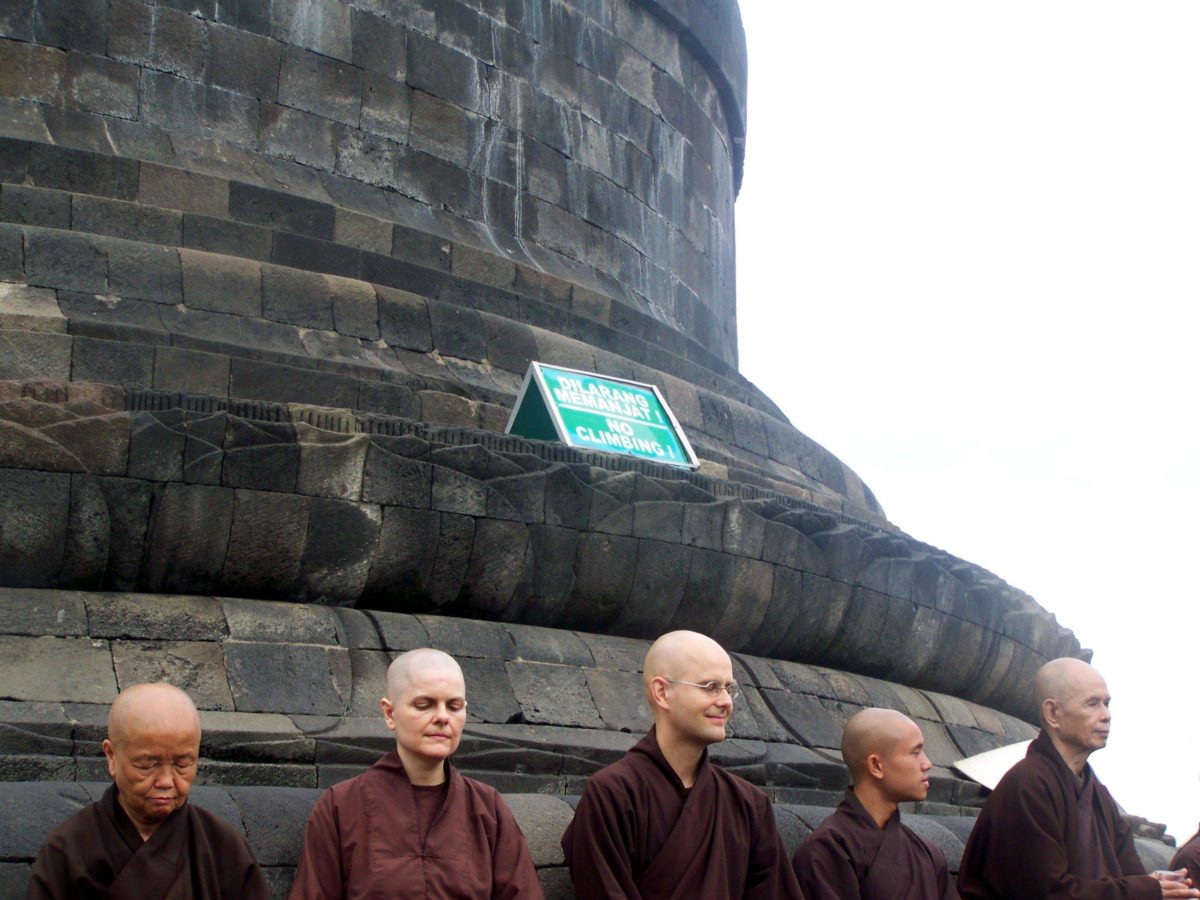
Going as a Sangha
Reflecting on Thay’s words, I realized in addition to his example and teachings of living Dharma, I had witnessed many throughout the retreat, in monastic and lay practitioners. The living Dharma found a unique expression in the International Delegation (ID). This eclectic, disparate group of about thirty participants from five countries, spanned several generations, including a few Dharma teachers, long-time practitioners, and some newcomers who discovered the retreat on Facebook.
Most of the ID landed in Jakarta the day before the retreat and bused together in hours of slow, rainy rush hour traffic. When we arrived, we shared flashlights and helped each other find our beds through the maze of buildings dedicated to retreat housing. The next morning, as we oriented ourselves to the facility and nearby town, Dharma teacher Peggy Rowe gently and consistently introduced the other Dharma teachers to us, so we could honor Thay’s lineage and its holders, blending respect and inclusiveness as we met each other.
The retreat was dense with practice: sitting, walking, silence, mindful exercises, Dharma discussions, and deep relaxation. We had to balance self-care within group activities. Peggy encouraged mindfulness of body wisdom, to honor when it needed to rest, to move, to relax. Gentle presence rather than rigid practice became the norm.
Gestures of offering Kleenex, sharing herbs, letting on where the nearest ice cream could be bought, and sharing smiles of recognition refl and generated kindness, compassion, inclusivity, and joy. An atmosphere of kind attention developed as members of the ID met irritation and cranky comments with deep listening and kindness, asked questions instead of ignoring silences, and demonstrated a willingness to meet others. Beginner’s mind became more available, the mind guided by freshness, not prejudices of the past or attachment to ideas. It encouraged spontaneous responses to who was participating, who was hovering, who was oblivious, who was suffering, who was joyful. We lived the inclusiveness of “going as a Sangha,” demonstrating that when we do that consciously, every moment becomes the living Dharma, filled with the actions of true love. With these ten days together, including the retreat and the half day at Borobudur, the ID Sangha body was well tended, warm, vital, and trusting, fertile soil for Sangha wisdom.
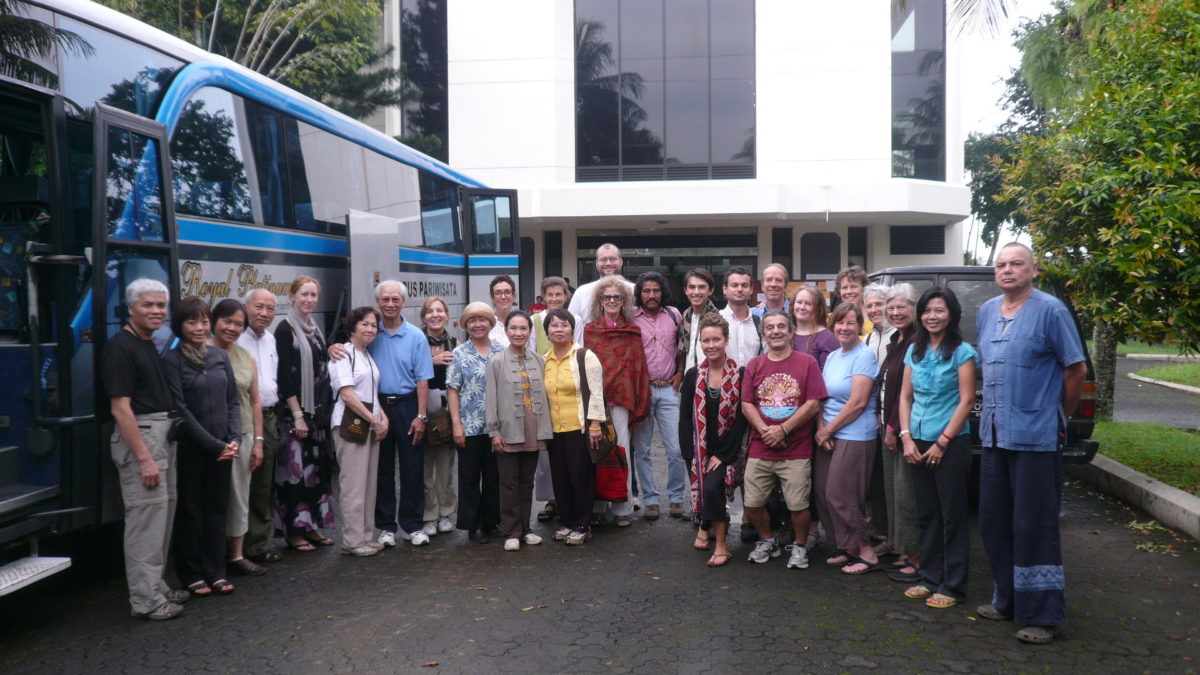
Dharma Rain
We boarded the bus for the stormy ride back from Borobudur to Yojakarta and tried to settle ourselves from the intensely full morning and the buzzing vendors who profited from our excitement. Peggy stood at the front of the bus with the microphone. She said, “We have just been charged by Dharma rain. It is vibrating in us and around us, like the rain falling here. We have an opportunity to sit together in silence and receive this nourishment. Deep into our bodies. To share it with our ancestors, without whom we would not be experiencing this moment. To offer it to the generations to come. To extend it to the world we live in in this moment. Absorb it deeply, and share it fully. Otherwise it will disperse through us in our old patterns of chatting, of shopping, of getting irritable and grumpy, of planning, of daydreaming, of depression, of distraction.” We breathed in and out. A quiet depth opened as our collective practice absorbed the gifts of the morning and shared their merit through interbeing and mindful presence.
An hour later, sitting in the front seats of the bus, we saw the effects of the continuing downpour: motorcyclists intently walking their bikes through thigh-high water; two men unloading garbage from the back of a small truck stuck in a hole while water swirled above its wheels; one-and-a-half-foot-high streams gushing down narrow cement streets. When we were invited to come forward and share with the group a Dharma moment, a child’s song, a joy to nourish the heart, the Dharma was expressed through each of us, both in heartfelt offerings and in deep listening. Attention was on love, not fear. The Sangha was living the Dharma, the Dharma was alive, and Buddha nature was present. I feel great gratitude to the Dharma lineage in the Order of Interbeing, and the gift of living Dharma shared by Thay, his Dharma teachers, and his Sangha.
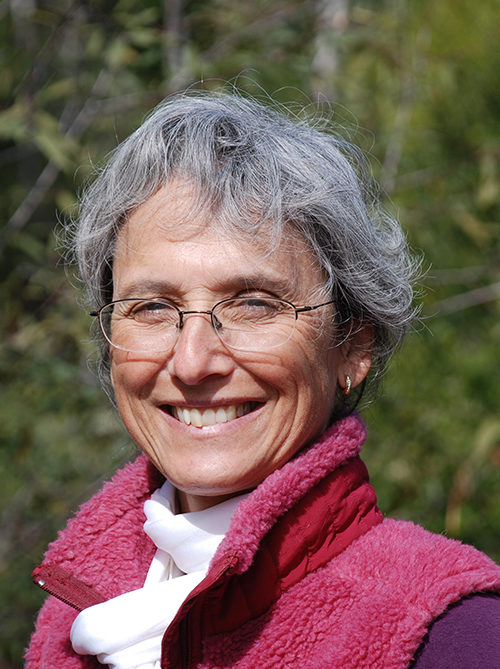
Miriam Goldberg, True Recollection of Joy, is a psychotherapist who lives in the Santa Cruz mountains with her husband and practices with Heart Sangha.

